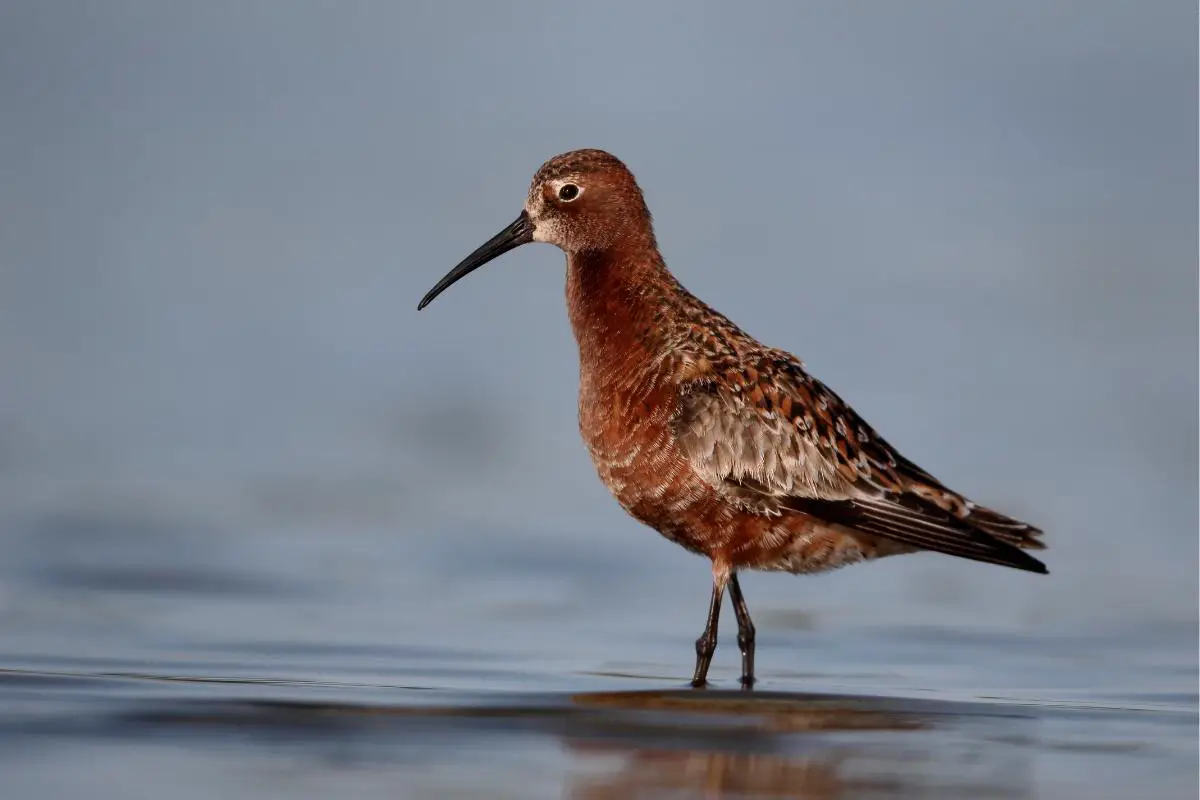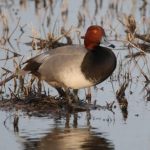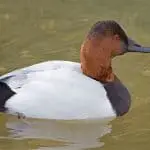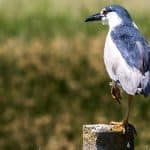Common Name: Curlew Sandpiper
Scientific Name: (Calidris ferruginea)| Size | Diet | Range in Hawaii | Status in Hawaii |
|---|---|---|---|
| 8 in. - 9 in. | insects, worms, crustaceans, and mollusks | O'ahu, Maui, Kaua'i, Moloka'i, and Big Island | Near Threatened |
The Curlew Sandpiper (Calidris ferruginea) is a small and graceful bird species that is known for its long, curved bill and distinctive plumage. With its striking rust-colored feathers and intricate markings, this sandpiper is a fascinating sight to behold in its natural habitat. Although it is not a native species to Hawaii, Curlew Sandpipers have been spotted occasionally on the islands as non-breeding visitors or vagrants, making for a rare and exciting sighting for birdwatchers.
In this article, we’ll explore the fascinating world of the Curlew Sandpiper and learn more about its unexpected presence in Hawaii.
Curlew Sandpiper
Appearance
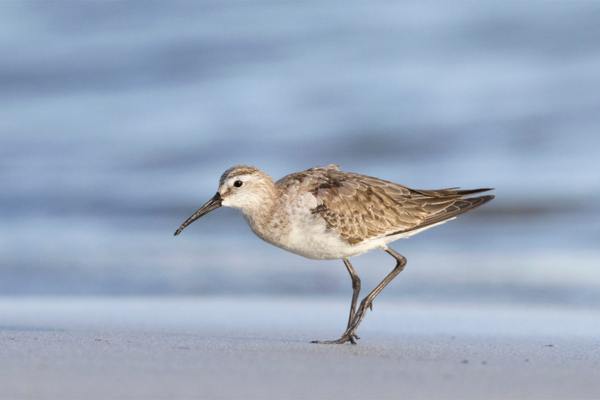
The Curlew Sandpiper captivates with its unique appearance. Sporting a slender body and long, curved bill, this migratory bird stands at approximately 8-9 inches in size. Its striking plumage showcases a mix of rusty browns, grays, and whites, adorned with intricate patterns that add to its charm.
Whether in flight or wading along the shoreline, the Curlew Sandpiper’s elegant silhouette and distinctively shaped bill make it a true marvel to behold.
Diet
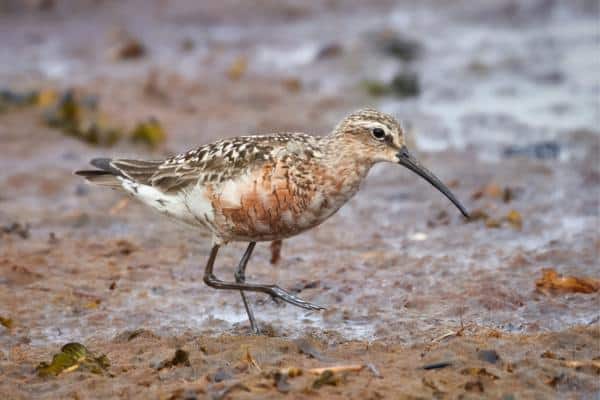
This migratory bird has a voracious appetite for tiny invertebrates found in coastal habitats. With its long, slender bill, the Curlew Sandpiper expertly probes the mud, sand, and shallow waters in search of insects, worms, crustaceans, and mollusks. Its foraging technique involves swift, probing motions as it delicately extracts its prey from the substrate.
Nesting
During the breeding season, these migratory birds create their nests in the Arctic tundra or subarctic regions, far away from their wintering grounds. Using a simple but effective scrape in the ground, the female Curlew Sandpiper carefully constructs a shallow depression lined with moss, grass, and feathers for added comfort. These nests are typically hidden among the vegetation or in drier patches of the wetlands, providing protection from predators and the elements.
Once the nest is ready, the female lays a clutch of eggs, usually numbering four in total. These eggs boast a beautiful olive or buff color, blending seamlessly with their surroundings. Both parents take turns incubating the eggs, ensuring their warmth and safety. The incubation period lasts for about three weeks until the eggs hatch, revealing downy, precocious chicks.
Shortly after hatching, the young Curlew Sandpipers are quick to leave the nest and begin their independent foraging journeys, guided by their innate instincts. The parents closely monitor and care for their offspring, teaching them crucial survival skills.
Behavior
These small to medium-sized shorebirds are highly migratory and display remarkable long-distance journeys. During breeding season, males perform aerial displays, showcasing fluttering flights and distinctive calls to attract females. They form monogamous pairs and both parents actively participate in nest building, incubation, and caring for the chicks.
Curlew Sandpipers are social birds, often congregating in large flocks during migration and on their wintering grounds. They forage by probing their long, downcurved bills into mud or sand to extract invertebrates, displaying their specialized feeding behavior.
Habitat
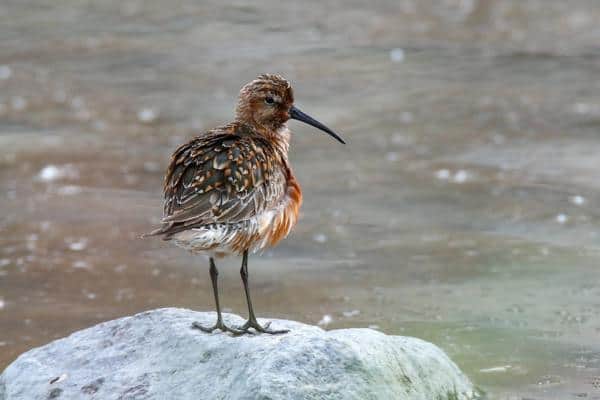
These migratory birds are often found in diverse coastal environments around the world. During their breeding season, they seek out expansive Arctic tundra or subarctic regions, where they construct nests amidst the vegetation or in drier areas of wetlands. In their non-breeding season, Curlew Sandpipers embark on impressive journeys, traveling to coastal mudflats, estuaries, and saltmarshes.
Range
The Curlew Sandpiper is a non-breeding visitor and vagrant species in Hawaii. The Curlew Sandpiper’s presence in the Hawaiian Islands is noteworthy. Approximately 11-13 individuals have been recorded in Hawaii, with some individuals over-wintering and returning for several consecutive winters.
Records are limited to certain locations, including O’ahu, Maui, Kaua’i, Moloka’i, and Big Island. Notably, there is only one record of the species in the Northwestern Hawaiian Islands. Hybridization events with Pectoral Sandpipers, known as “Cox Sandpipers,” have also been observed in Hawaii.
Conservation Status
The conservation status of the Curlew Sandpiper is a matter of concern. This migratory bird species faces various threats that impact its population and habitat. The International Union for Conservation of Nature (IUCN) lists the Curlew Sandpiper as “Near Threatened.”
Interesting Facts
1. Sexually dimorphic
Male and female Curlew Sandpipers exhibit slight differences in appearance, displaying sexual dimorphism. Males tend to have brighter and more distinct breeding plumage, while females have a slightly duller coloration.
2. High-altitude flights
During migration, Curlew Sandpipers are known to undertake high-altitude flights, reaching elevations of several thousand meters (over 10,000 feet). These flights allow them to utilize favorable wind currents and conserve energy during long-distance journeys.
3. Cultural Significance
The Curlew Sandpiper holds cultural significance in certain regions. It features in traditional folklore and is admired for its beauty, migratory prowess, and its ability to connect distant habitats and ecosystems.
4. Wing-loading Adaptation
The Curlew Sandpiper has adapted to its long-distance migratory lifestyle through modifications in its wing structure. It has a relatively high wing-loading, which allows for efficient flight over long distances, reducing energy expenditure during migration.
Frequently Asked Questions
1. How long do Curlew Sandpipers live?
Curlew Sandpipers have an average lifespan of around 8-10 years. However, some individuals have been known to live up to 15 years or more.
2. Can Curlew Sandpipers swim?
Curlew Sandpipers are not strong swimmers, as their body structure and adaptations are more suited for wading and walking along shorelines. However, they can paddle through shallow water if necessary.
3. Can Curlew Sandpipers be kept as pets?
No, Curlew Sandpipers are wild birds and should not be kept as pets. It is essential to respect their natural behavior, habitat requirements, and conservation status by observing and appreciating them in their natural environments.
4. How long does it take for Curlew Sandpipers to reach their wintering grounds?
The migration duration of Curlew Sandpipers can vary depending on the distance and weather conditions. On average, their migration from breeding grounds to wintering grounds may take several weeks to a few months.
5. Can Curlew Sandpipers breed in captivity?
Curlew Sandpipers are wild birds and have not been successfully bred in captivity on a large scale. Their complex migratory behavior, specific habitat requirements, and conservation concerns make it challenging to maintain and breed them in captivity.
